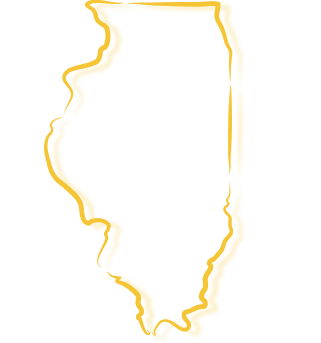Greyhound Bus Accident Lawyer
St. Louis Greyhound Bus Accident Attorney
Greyhound Lines, Inc.: This huge bus line offers transportation across many of the cities in America. Greyhound offers a number of advantages for transportation. The cost remains relatively low, especially compared to airfare or to reach the same destinations. Many people enjoy taking the longer, slower route because they can take in the scenery and get a taste of local culture as they move through the area. Greyhound boasts 1,700 buses in its lines and claims safety as a top priority. Each bus also has an environmentally friendly design that helps reduce emissions.
Unfortunately, in spite of the line’s decision to prioritize safety, Greyhound bus accidents still happen. The Federal Motor Carrier Safety Administration’s annual Large Truck and Bus Crash Facts report doesn’t track Greyhound accidents specifically, but in one recent year, it found more than 15,000 total accidents involving more than 16,000 buses that led to serious injuries. According to USA Today, while the U.S. Department of Transportation gave Greyhound its highest possible rating, in two recent years Greyhound buses were in 102 crashes that caused three deaths and 57 injuries.
Not all of those accidents involved Greyhound buses. If you suffer injuries in a Greyhound accident, do you know what to do next? Working with a lawyer can help provide the legal support you need following a bus accident.

Typical Injuries From Greyhound Bus Accidents
Most of the buses in the Greyhound line, and all of the new buses, now contain seat belts. Seat belts in all motor vehicles help prevent or decrease passenger injury. Seat belts help reduce injury but they cannot protect every occupant from trauma. Some passengers may still experience severe injuries, including:
- Traumatic brain injury. In some cases, the passengers’ heads may strike the seats or walls of the bus. In other cases, the passengers may suffer head trauma as flying objects in the bus crash around during the accident. Traumatic brain injury may cause significant short-term problems, including memory loss, difficulty concentrating, and difficulty working through common tasks. Many traumatic brain injury sufferers may find that they have long-term issues, including short-term memory issues, personality changes, and changes in temperament. Traumatic brain injury symptoms may not manifest immediately after an accident. In some cases, accident victims may start to show symptoms hours or even days after the accident itself.
- Spinal cord damage. Spinal cord damage occurs when the spinal cord experiences extreme trauma. Often, spinal cord damage includes limited mobility or paralysis. Paralysis may occur from the waist down or from the neck down, depending on the severity of the damage and the point on the spinal cord at which it occurs.
- Organ damage. In many cases, victims may suffer organ damage due to concussive force during the accident. They may require surgeries to restore quality of life. In some cases, organs may not recover normal functions.
- Broken bones. Sometimes, the accident may throw victims into the side of the bus or into the seat in front of them. This poses particular danger on buses without seat belts or if the passenger chooses not to wear their seat belt. Broken bones may prevent mobility short-term or long-term, depending on the severity of the break, the age of the victim, and the part of the body impacted by the break.
- Amputations. Sometimes, bus accidents lead to severe injuries, including amputations. Amputations may occur at the time of the accident, as debris from the bus or the other vehicle cuts into the victim, or doctors may deem amputation necessary due to severe crushing damage at the time of the accident.
Who Bears Responsibility for Bus Accidents?
Bus accidents may occur for a wide range of reasons, including weather-related problems. However, legally speaking, you may need to identify the individual or entity who bears responsibility for your accident to enable you to seek appropriate compensation. An attorney proves especially useful if your accident includes multiple factors that the insurance company must take into account. Working with an attorney can help you more effectively identify who bears financial liability for your injuries. Common parties that bear potential liability include:
The driver of the bus. The driver of the bus may cause or contribute to the accident in several different ways, including:
- Drinking and driving.
- Driving under the influence of either illegal drugs or prescription medications.
- Failing to adhere to the rules of the road.
- Attempting to navigate in a too-small area, causing an accident because the bus does not fit.
- Driving while distracted, including cell phone use, eating and driving, or paying more attention to their passengers than to their driving.
Most bus drivers receive extensive training in how to handle poor weather conditions, bad traffic, and challenges on the road. Unfortunately, some drivers still make foolish choices due to inattention, fatigue, or excessive time on the road. Drivers may also make bad judgment calls based on the current conditions or lose track of cars around them in their blind spots.
The bus company. In some cases, the bus company may bear liability for the accident. Bus companies must adhere to several strict regulations intended to help keep their passengers safer. Bus companies may share in liability for the accident in several circumstances:
- The bus company maintains unrealistic expectations for its drivers. For example, requirements might include too many hours on the road or reaching certain stops within a specific time frame that remains unrealistic due to traffic or weather conditions. According to CNN, Greyhound does not enforce its own Rule G-40, which asks drivers to perform a safety stop and rest every 150 miles.
- The bus company allows drivers to continue working for them even with a past history of dangerous behavior, traffic citations, or past accidents.
- The bus company does not conduct appropriate maintenance on their buses, leading to mechanical failure which contributed to the accident.
The mechanical company—usually a part of the transportation company. Mechanical failure can contribute significantly to an accident. Engine problems, brake problems, or steering issues can all seriously compromise the functionality of the bus. The driver may struggle to avoid an accident when the steering suddenly goes out or the brakes stop working. Mechanics as employees may bear partial liability for the accident if:
- They claimed to fix a problem but did not really fix it.
- They failed to perform proper maintenance on the bus, as specified within their contract and did not notify the proper individuals about the lack of maintenance.
- They performed maintenance or repairs on the bus immediately before the accident and failed to report a problem they could reasonably have been expected to note while performing maintenance.
Other drivers. Maneuvering around a bus requires responsibility on the part of other drivers on the road, too. Buses have large blind spots that can make it more difficult for drivers to see other vehicles. If drivers cannot see the bus’s mirrors, they can safely assume that the bus driver cannot see them. Unfortunately, many drivers behave irresponsibly around buses. Other drivers may contribute to bus accidents by:
- Deliberately driving in the bus’s blind spot, rather than moving on into a safer position.
- Pulling out in front of a bus.
- Ignoring bus signals, even when the driver knows the bus driver cannot see them.
- Failing to adhere to the rules of the road, including following traffic signals and yielding appropriately to bus drivers.
- Pulling over abruptly in front of a bus or slamming on their brakes in front of a bus. Buses, as large vehicles, require more room to stop than smaller passenger vehicles.
In some cases, many factors may have worked together to contribute to your bus accident. By working with a lawyer, you can better identify the responsible parties and ensure that you do not miss any important elements of your claim.
What Damages Can You Recover After a Greyhound Bus Accident?
After a Greyhound bus accident, you, as well as many other passengers on the bus, may face serious injuries. The funds you receive after your accident will depend on a variety of factors: the severity of the accident, the extent of the insurance policy, and the severity of your injuries. However, many victims of bus accidents file for similar damages, including:
Medical expenses. After your accident, you may have received substantial medical care, especially with serious injuries. Your ambulance ride to the hospital begins your medical journey, but many other factors may also apply:
- Emergency room services
- Hospitalization
- Surgeries
- Rehabilitation services, including physical therapy
- Alterations to your home or vehicle to account for your injuries
Pain and suffering. In addition to physical pain and suffering caused by your injuries, you may suffer significant ongoing suffering. You may find yourself unable to enjoy activities that once brought you pleasure, or you might miss out on milestone moments in your life and the lives of your loved ones due to your ongoing recovery. Many victims of bus accidents choose to include pain and suffering, including both physical and emotional pain and suffering, as part of their claims.
Lost wages. Did you need to miss time at work due to your injuries? While some people return to work within a few days or weeks of their accident, others may linger out of work for months. Even when they return to work, they may need to miss time for appointments and therapy. These lost wages add up to significant losses, especially since they occur at a time of high expenses.
Lost earning potential. While some people return to work after their injuries, other individuals cannot return to work in their former positions after the accident, whether due to physical limitations or traumatic brain injury. These individuals may include lost earning potential in their claim as well as lost wages.
How Might Greyhound Try to Get out of Paying Its Fair Share After an Accident?
After a bus accident, insurance companies often use a number of common tactics to help reduce their financial liability. These strategies may include:
- Attempting to prove their driver did not cause the accident. While you, as a passenger in a bus accident, may not bear liability for damages caused by the bus accident, if the insurance company attempts to shift responsibility to someone else, it can delay your claim. A delayed claim means more time before you receive the funds you deserve for your accident, which can make it difficult for you to pay your bills or take care of needed alterations to your daily lifestyle.
- Downplaying the severity of your injuries. You know what difficulties your injuries pose and how they make it difficult for you to handle your everyday responsibilities. Unfortunately, the insurance adjuster may attempt to prove that your injuries cause less difficulty than you claim, which can, in turn, decrease the company’s liability.
- Trying to prove your injuries stem from another event. You claim that your injuries occurred during the accident. The insurance company, however, may insist that your injuries occurred at another time, either before or after the accident. The company may attempt to prove or suggest that your injuries did not result from the bus accident, which means the company does not bear liability for your injuries.
- Offering a low initial settlement. Immediately after the accident, the insurance company may send you a fast settlement offer. Unfortunately, that settlement offer may not equal the amount you deserve for your injuries, including your long-term medical care or time off work. The insurance company’s goal is to get you to sign that paperwork to limit the company’s future liability.
How Much Will a Lawyer Cost After a Greyhound Bus Accident?
Many people worry that they cannot afford a lawyer after a Greyhound bus accident, or that a lawyer will cost more than they will make from the settlement. In reality, a lawyer can offer a number of advantages to your case. A lawyer can:
- Help advise you about how to answer important questions regarding your injuries.
- Advise you about posting on social media in the aftermath of your accident.
- Communicate with the insurance company on your behalf.
- Go to court if necessary to help achieve the compensation you deserve.
In many cases, working with a lawyer can significantly increase the settlement you would receive if you negotiated it on your own. At The Cagle Law Firm, we start with a free consultation for our clients. Often, we accept clients on a contingent fee basis: this means attorney fees are collected only as a portion of any settlement or award obtained, rather than you paying up front.
Do You Need a Lawyer After a Greyhound Accident? Call The Cagle Law Firm
If you suffered injuries in a Greyhound bus accident, do not wait to get legal help. Contact The Cagle Law Firm today to connect with one of our St. Louis bus accident attorneys, at (314) 276-1681 or write to us using our online contact form to set up your free consultation.
Contact Us Today
The Cagle Law Firm serves accident and injury clients throughout St. Louis and the greater St. Louis metro area, including St. Louis Counties of Chesterfield, Wildwood, Eureka, Ladue, Olivette, Clayton, Kirkwood, Fenton, Affton, and Jefferson Counties of Arnold, High Ridge, Antonia, House Springs, and the eastern Missouri and southern Illinois communities. If you or your family needs legal assistance with your personal injury case, call The Cagle Law Firm at (314) 276-1681 or use our online contact form to request a free case review or get more information.
Areas Served
The Cagle Law Firm – Missouri
The Cagle Law Firm – Illinois
The Cagle Law Firm – Kentucky
CONTACT THE CAGLE LAW FIRM TODAY
Request your FREE CASE REVIEW today by calling (314) 276-1681 or by sending a message through the site contact form. Your contact info stays private and is only used to reply to your inquiry.
Whether you need information about a new injury or existing injury, our lawyers answer your questions with no-risk and no followup marketing.
Free Consultations and Case Reviews
Questions? Ask An Attorney
Fields marked with an * are required
Copyright © 2025 St. Louis Personal Injury Lawyers | The Cagle Law Firm. All rights reserved.
Disclaimer | Site Map | Privacy Policy
Get a free case review with St. Louis' best personal injury lawyers to help you win top compensation




